TO say the current prolonged dry period has been a challenge and a learning curve would be an understatement for Justin and Amy Dickens. But they are treating it as a “point in time” and are concentrating on making sure they are across all aspects of their business, monitoring stress of all team members, and learning how to build resilience.
Justin and Amy, who have two young sons, Jack, five, and Mitchell, three, operate their cattle and sheep business JAD Agriculture from their 1,020-hectare home base Greenvale, at Yeoval in Central West NSW.
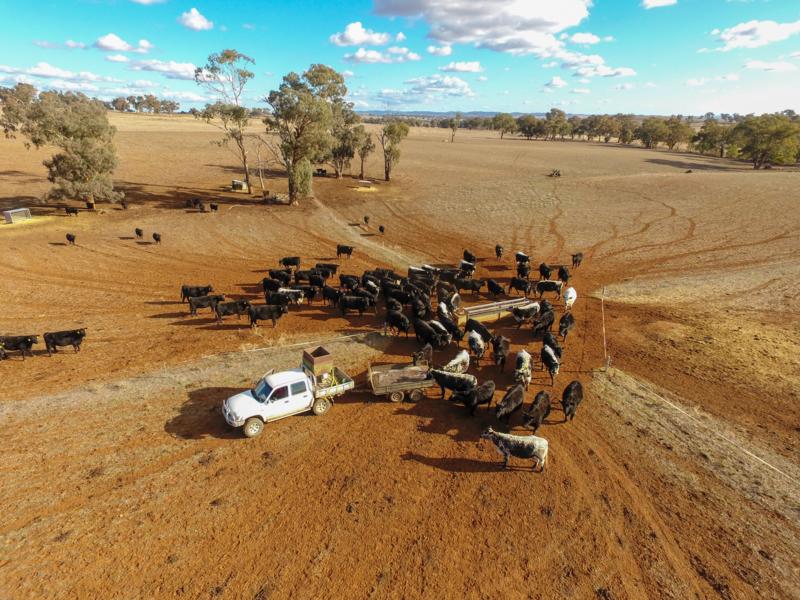
Amy says historically it is a “pretty safe” area with an average annual rainfall of about 650mm. “Long term, we get a couple of inches every month, year-round, and land values reflect how safe this district is,” she says. However, they’ve recorded just 115mm from the start of December last year to mid-August this year.
For Justin and Amy, who purchased their first property, Coolah, in 2012, this is their first drought as landowners. And although they both grew up on farms and have spent their careers working in agriculture, Amy says dealing with climate variability is a “challenge”. The Dickens take a regenerative approach to managing their farm business and have adhered to a grazing chart to help them determine when to buy stock and when to de-stock – or containment feed, if that is the best option.
Previously they were trading livestock and could easily adjust their stocking rate in a dry period by selling down. But the situation has changed since purchasing their first Speckle Park bull in 2012 and introducing their seedstock enterprise, JAD Speckle Park.
BANKING ON THEIR SPECKLE PARK HERD
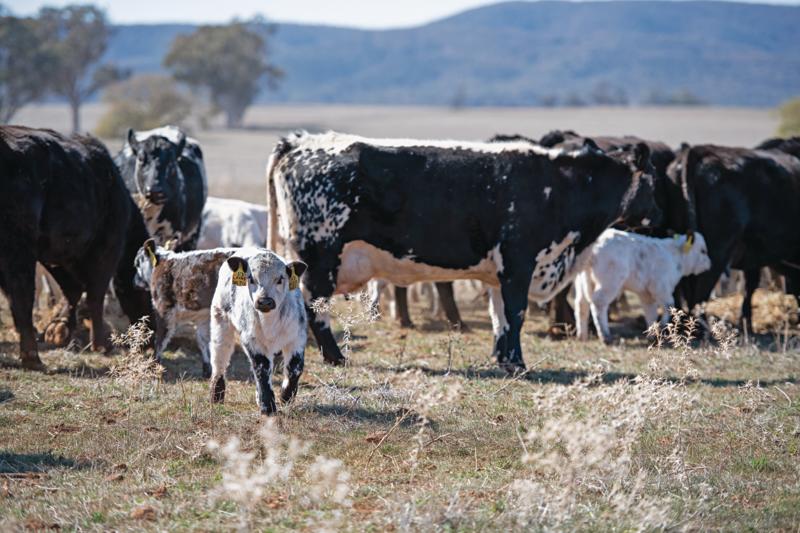 A BREED APART: The couple’s livestock business focuses on the production of Speckle Park cattle.
A BREED APART: The couple’s livestock business focuses on the production of Speckle Park cattle.
To start their Speckle Park seedstock herd, they purchased Canadian embryos, with 75 embryo transfer calves born last year and a further 80 due this year. Their first bull sale will be next March. All of this investment means the ability to de-stock is now more limited.
“We de-stocked as much as we could at the start of the year and that brought us back to three Dry Sheep Equivalents per hectare, which is less than half of the district’s long-term carrying capacity,” Amy says. “And we early-weaned our calves to reduce our overall stocking rate, allowing us to tailor our rations accordingly.”
While they’d like the stocking rate to be lower, she says it’s not the best solution financially as they are carrying high-value seedstock animals, including pregnant recipient cows. As a result they are currently running about 400 cattle.
They had planned ahead to manage carrying the non-disposable livestock, Amy says, planting a forage sorghum crop last spring, intending to cut a portion of it for silage as a drought preparedness measure. But it came to nothing as the crop failed due to lack of spring rain. They also dry sowed 162ha of grazing oats in late-February, which didn’t emerge until early June. The crop has barely survived and in mid-August it was sitting at the three- to four-leaf stage, waiting for rain. As a result, they’ve had to buy in all their feed.
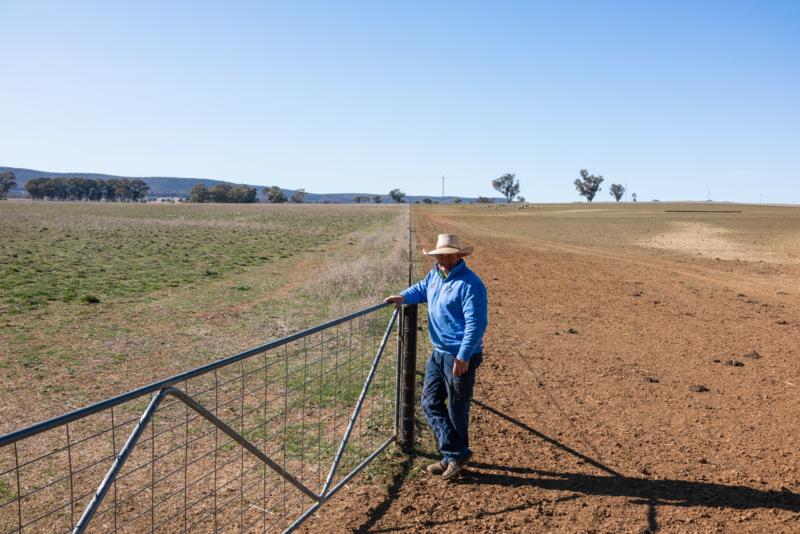 Justin in the pastures, which are under constant review so they will bounce back once the rain arrives.
Justin in the pastures, which are under constant review so they will bounce back once the rain arrives.
To avoid damaging their pastures, the Dickens are keeping the livestock in sacrificial paddocks, which are completely bare so their diet is 100% supplemented. But this means their perennial pastures have full ground cover and are ready to bounce back when the rain comes.
“People often underestimate the cost of pasture depreciation due to constant overgrazing in extended dry periods,” Amy says. “The $300-per-hectare-plus bill in re-establishment costs is only part of the equation. It’s the lost time and nurturing of young perennial pastures that has a major effect on productive capacity. Not to mention the loss of humus [the organic component of soil] that results from overgrazing.”
WEIGHT WATCHING - CRITICAL DURING DROUGHT
So, that means feeding in some form, every day. “We made the decision to keep our pregnant females in good condition, figuring we would rather do that than have them lose weight and then have to put it back on again to ensure they re-join after calving,” Amy says.
All the pregnant cows are being fed cottonseed and grape marc (skin, seed and pulp left from winemaking) on a ratio of 60:40, three times a week and rice straw as roughage daily, along with a 12% urea dry lick to help them digest the straw. At $326 a tonne, delivered, for the cottonseed and grape marc mix and $66 a bale, delivered, for the rice straw, the cow feed mix sets them back $11.83 per head per week – a justifiable expense to keep high-value animals under Justin and Amy’s watchful eye.
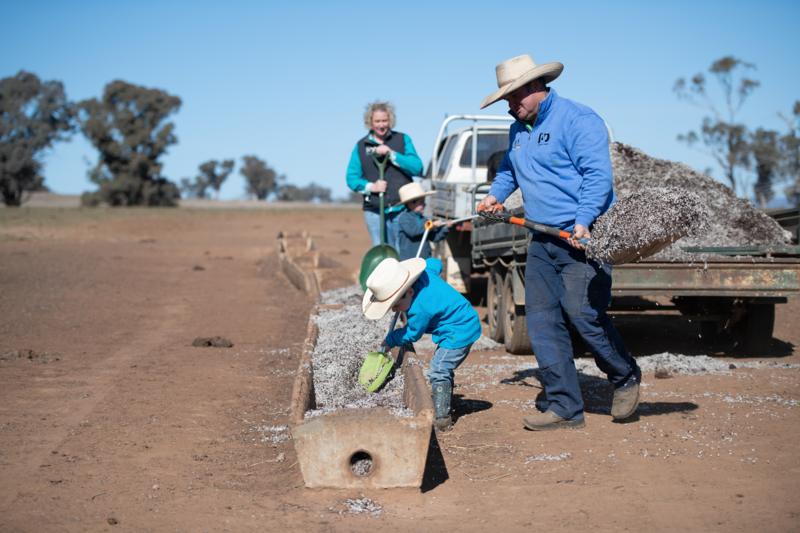 GRAPE MARC: Mitchell and Jack help their parents fill feed troughs with a 60:40 mix of cottonseed and grape marc.
GRAPE MARC: Mitchell and Jack help their parents fill feed troughs with a 60:40 mix of cottonseed and grape marc.
Justin says after a week of being containment fed, the cows stop walking in search of feed and fall into a regimen of eating then resting, which results in a lower total feed requirement. Their purebred bulls are on a stable plane of nutrition to ensure adequate growth. They are being fed beef grower pellets at 1.5% of bodyweight and oaten/vetch hay. The heifer calves are on a similar ration to ensure they reach joining weight to calve as two-year-olds.
“It is very easy in times like now for us to fall into a survival mode but we have to continually challenge ourselves to keep an open mind to cashflow opportunities – if not during this dry period, then certainly coming out of it,” Justin says.
“It is essential to keep our land asset in a healthy state to allow for this. We need to also keep in perspective that despite there being such a widespread dry period, sheepmeat, beef and wool markets are at unprecedented levels and so agriculture remains an exciting place to invest and raise a family,” he adds.
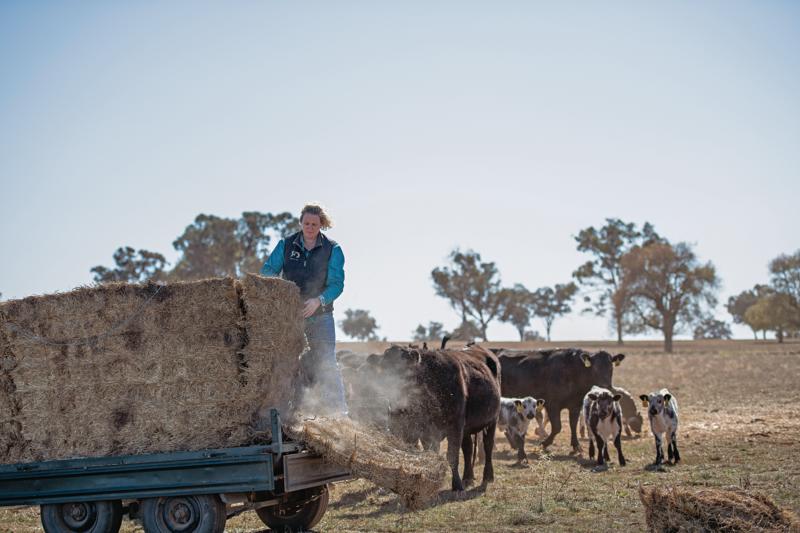
STRAW POLL: Amy distributes a daily ration of rice straw roughage to Angus cows and their Speckle Park cross calves.
While there has been concern around the quality and types of feed farmers are accessing, Amy says they’ve had no losses or animal health issues since they started feeding. Being their first extended dry period, she says they have learned a lot.
“I had never heard of grape marc prior to this year,” she says. “In a way, that’s exciting because we know we’ll learn from this and do things differently next time, which will make us more resilient as a business going forward.”
FODDER RESERVES KEY TO DROUGHT PROOFING
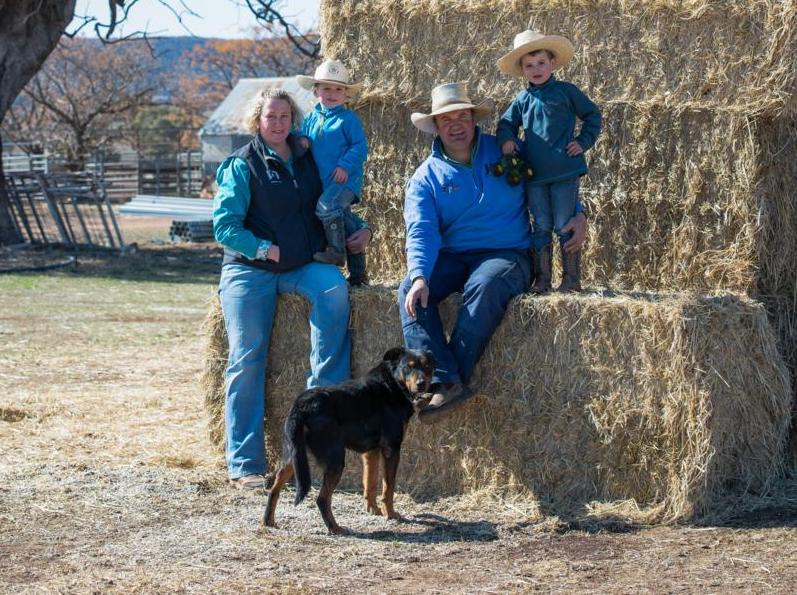 The Dickens family with their huntaway/kelpie cross Buddy.
The Dickens family with their huntaway/kelpie cross Buddy.
While Amy says they don’t want to be too hard on themselves, hindsight has taught them the value in having fodder reserves to protect their core breeding herd through such events. “We treat this dry period as a point in time. Over the past seven years since we have been in business, this 15-month period has been vastly different to the previous five or so years, which were great years financially,” she says.
For Justin, it was important not to procrastinate about the decision to match stocking rate to carrying capacity. “We have never fared well when we have relied on hope,” he says. “The decision to do nothing is just that – a decision, and it has to be owned by those who choose this option.”
RELATED: “Destocking: Making the hard choices”
The Dickens monitor stress levels of all members of the business at their monthly “working on the business” meetings, aiming to address concerns before they become significant issues.
Amy says the key to them “sleeping well at night” lies in education. They have been ensuring they have a thorough understanding of the numbers in the business, the value of their animals and the viability of the investment to carry the livestock through the dry period.
Part of this is getting off-farm to attend courses, conferences, workshops and field days to learn from others about how to improve their weaknesses and grow opportunities.
“We aren’t afraid to seek advice from people smarter than ourselves,” Amy says.
“In the middle of this period we are going to Tasmania for a conference because, for one, we have to keep our minds active and two, we want to be better tomorrow than we are today,” says Amy, who reveals they spend more than $10,000 a year on training.
She puts their attitude largely down to having a very marginal equity when they purchased their farm. “Our decisions to de-stock have come about through active planning and confidence built up in the system we operate by,” she says. “We had to be nimble in our decision-making because we simply couldn’t afford to make too many mistakes. ”
*READ MORE about drought affected farmers adapting during dry conditions:
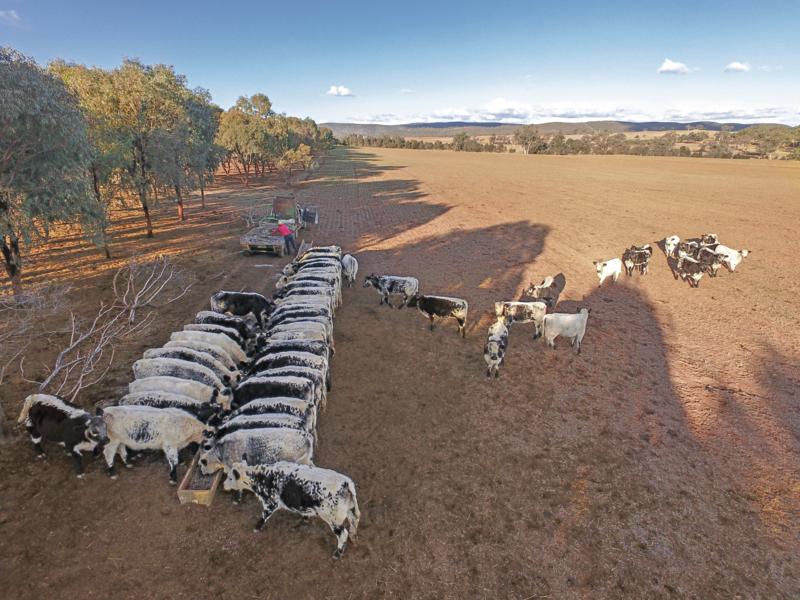
A photo, taken in June, of one of the sacrificial paddocks on the farm which have been given over to containment feeding.
A DIFFERENT SORT OF DROUGHT
Peter Carter, chair of the Dickens’ local NSW Farmers branch of Wellington, says this drought is different to the past dry spells he and others in the district have experienced.
“For a start there is no agistment, normally people would feed sheep and send cattle away,” Peter says.Another thing that makes this drought different is that farmers are able to buy good quality hay – normally it is second grade – and commodity prices are high.
“In most droughts you can’t give cattle or sheep away, but cattle, sheep and wool prices are very buoyant so that’s a plus.”
The Wellington branch held a drought meeting at the start of September where a number of experts, including a rural financial counsellor and livestock nutritionist, spoke to help answer questions local farmers have.
Peter says you can learn from drought – but farmers need to stay positive and be able to rationalise all of the things that go in a drought. “Nobody knows when a drought will break,” he says. “We all know it will rain, we just don’t know when.”
RELATED ARTICLE: “If you don’t think drought is part of farming you’re in the wrong game”